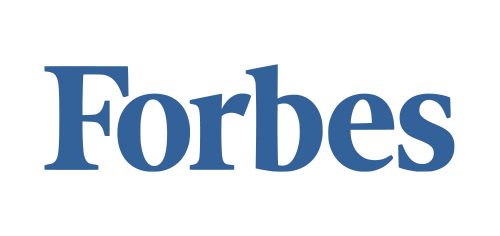Most of us are accustomed to the way the word “Forbes” looks on the magazine cover as it hasn’t really changed for a couple of decades. However, before that, there were plenty of alterations. During some periods, the insignia was replaced annually. The magazine experimented with typefaces and style a lot.
Meaning and history
Forbes magazine was founded in the fall of 1917. Before the following year started, the magazine used a logo in which the letters were embellished with lots of swashes. In fact, this was very much connected with the Arts and Crafts movement that was very popular in the United States at the time.
1917 – 1918
 The 1918 logo looked a bit like World War I posters – it was somehow reminiscent of the Renaissance and Beaux Arts style.
The 1918 logo looked a bit like World War I posters – it was somehow reminiscent of the Renaissance and Beaux Arts style.
1918 – 1922

The very first logo for the famous magazine was introduced in 1918 and featured a fancy custom inscription “Forbes Magazine” set in two levels. All capital letters of the nameplate were executed in a playful yet classy font, with elongated and curved lines coming out of them.
1922 – 1924
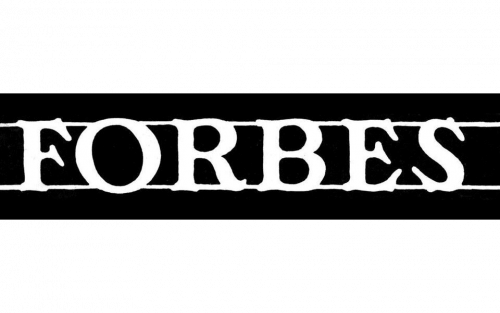 The 1922 Forbes logo was in a way similar to the original one due to the swashes. However, this time, they weren’t as prominent.
The 1922 Forbes logo was in a way similar to the original one due to the swashes. However, this time, they weren’t as prominent.
1924 – 1925
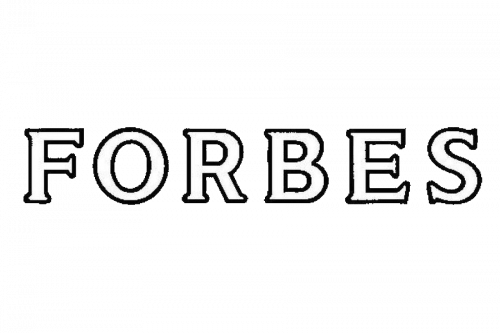
In 1925 the magazine switched white on the black style to a bold white inscription in a thin black outline, this gave more opportunities for the badge, making it look balanced and stylish on any background.
1925 – 1930

The redesign of 1925 kept the white outlined style of the logotype but switched the typeface to a more elegant narrowed one. The letters became taller, which made the whole composition more sophisticated and chic. Serifs on the ends of the lines got smoother but their ends — sharper.
1930 – 1934

In 1930 the magazine starts using a stable black inscription as its official logotype. The ExtraBold serif typeface evokes a sense of reliability and professionalism, being at the same time modern and progressive, which brilliantly reflected the character of the editorial.
1934 – 1937
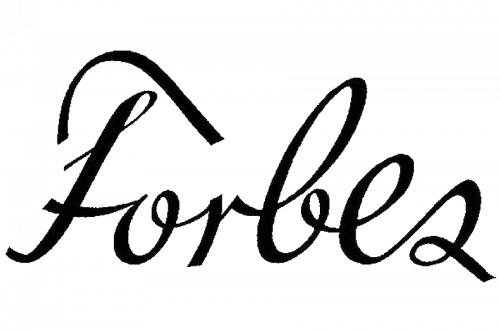 One of the most memorable insignias has probably been the one introduced in 1934. To begin with, it was italicized – something very unusual for publications of that era. The initial “F” was a lowercase one, but it looked like a capital due to a hat on top.
One of the most memorable insignias has probably been the one introduced in 1934. To begin with, it was italicized – something very unusual for publications of that era. The initial “F” was a lowercase one, but it looked like a capital due to a hat on top.
1937
 The 1937 logo got rid of italics completely. Instead, it featured a Futura-based type. It was customized with the help of the classical proportions (the so-called roman caps). The “O” catches the eye, too – it’s a perfect circle.
The 1937 logo got rid of italics completely. Instead, it featured a Futura-based type. It was customized with the help of the classical proportions (the so-called roman caps). The “O” catches the eye, too – it’s a perfect circle.
1937 – 1938
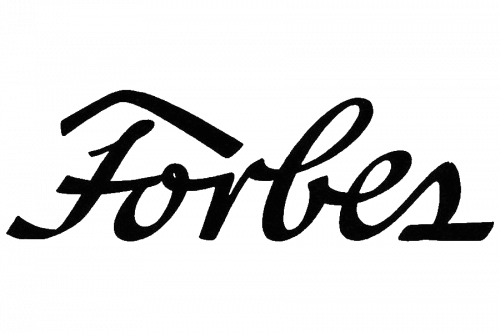
The logo, used by Forbes from 1936 to 1938, was written in a custom modern cursive with “broken” year bold and sleek lines. It was an interesting and stylish inscription, though didn’t stay for long, as had no stability and confidence in it.
1938
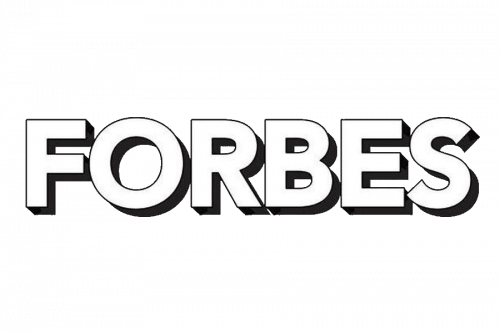 Three utterly different insignias were used in 1938, from an elaborate script to a simple sans serif one. The magazine seemed to be experimenting with styles. A year later, a logo was introduced that was inspired by war posters. It was in use throughout the following decade.
Three utterly different insignias were used in 1938, from an elaborate script to a simple sans serif one. The magazine seemed to be experimenting with styles. A year later, a logo was introduced that was inspired by war posters. It was in use throughout the following decade.
1938 – 1939

Another logo, designed in 1938, was written in white narrowed sans-serif letters, with a thin black outline and a delicate gray shadow. This version didn’t reflect the character of the magazine as well as most of the previous designs, so was changed to something new just in one year.
1939 – 1953

The logo from 1939 was executed in black and placed on white, using a fancy stencil serif typeface for its long sophisticated letters with slightly narrowed contours and elongated smooth ends of the lines. This version of the nameplate stayed with the famous magazine for more than a decade.
1953 – 1966

The redesign of 1953 switched the typeface of the Forbes logotype to a more traditional and lightweight one. Another change about the magazine’s visual identity was in enlarging the first capital “F”. This made the logo unique and recognizable and also added a touch of power.
1966 – 1973
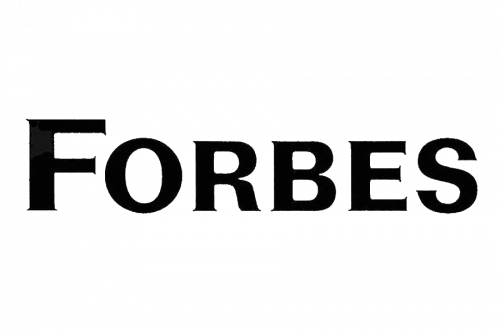 The Forbes logo unveiled in 1966 was based on the Univers font, which was “upgraded” with serifs. When some more weight was added to the letters a decade later, they started to look like Franklin Gothic.
The Forbes logo unveiled in 1966 was based on the Univers font, which was “upgraded” with serifs. When some more weight was added to the letters a decade later, they started to look like Franklin Gothic.
1973 – 1977
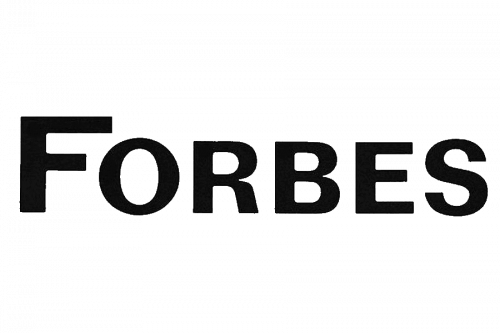 In the magazines published throughout the late 1970s, the wordmark was given in a massive, bold sans serif type.
In the magazines published throughout the late 1970s, the wordmark was given in a massive, bold sans serif type.
1977 – 1978

For only one year, in 1977, Forbes was using a modern and simple sans-serif typeface for its logotype. The bold black letters featured lean full contours with no serifs and looked too “usual”, but the magazine wanted changes and experiments.
1978 – 1999
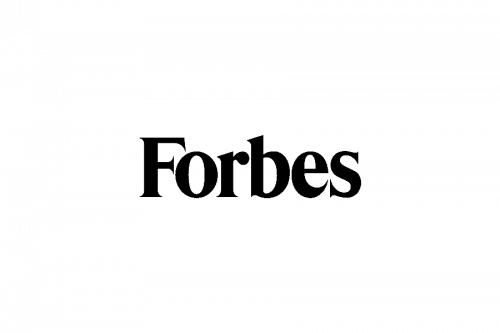
The redesign of 1978 brought us the logo we all remember today, and it became a basement for the one, created later. The new typeface is a bold serif with smooth rounded elements and thin sharp ends of the lines. It looks super chic yet stable and progressive at the same time.
1999 – Today
The latest modification (1999) resulted in a more open and sharper lettering. There is more breathing space between the letters now.
Font
The wordmark looks very much like the Publico Headline Bold font. The type was altered, though. The “r,” at least, has been heavily modified.
Colors
Typically, the letters are given in white on the magazine covers. However, other versions are also possible.




